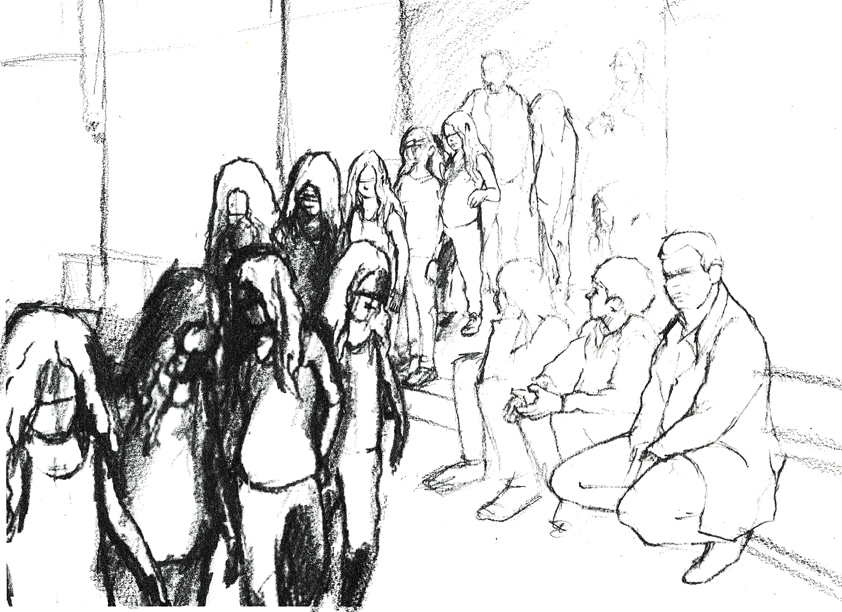Ahead of Tino Sehgal’s forthcoming talk at Foundation Beyeler, the first its new programme of Artist Talks, co-hosted by UBS, we revisit Robert Barry’s review of the artist’s 2016 Palais de Tokyo show…
Palais de Tokyo, Paris, 12 October – 18 December 2016
“My name is Ann Lee…” This is not the first time I have encountered the manga character purchased by Philippe Parreno and Pierre Huyghe in 1999. Three years ago, I was in this same auditorium in one of Palais de Tokyo’s subbasements during Parreno’s exhibition Anywhere, Anywhere Out of the World, watching her on a screen. Though I missed her performance in that exhibition, she’s stepped out of the screen again for this one, embodied by a real-life ‘four-dimensional’ girl – which, she says, “is much more fun”.
“Lately I’ve been hanging out with an artist called Tino who works with people, not objects,” Ann Lee explains to her new friend, a boy called Marcel. “But he always seems to be very busy,” she continues, before turning to address the handful of spectators: “Do you think it’s better to be too busy or not busy enough?” Everyone keeps shtum, avoiding her gaze.
Sehgal is the second artist (after Parreno) to be given license to use the entire Palais de Tokyo space. The place has never looked so empty. Apart from one of Felix Gonzalez-Torres’s spangly curtains over the entrance and a few of Parreno’s balloon fish (which seem to have become lost in the beams of the foyer’s ceiling), the place is almost completely bare. It’s even emptier than the Centre Pompidou’s famous Vides, the 2009 show of historical empty galleries. At least Vides had wall texts, signs and whitewashed surfaces. Sehgal has gotten rid of all that. The place seems abandoned.
So it’s with some trepidation that I start walking towards the first gallery – until a small boy rather solicitously offers himself as guide. “Do you mind if I ask you a question?” he asks. “What is progress?” I’d read about Sehgal’s 2006 work, This Progress, so I felt at ease chatting about the aporias of nineteenth-century positivism with first this boy and then a somewhat older boy, wandering in circles through the otherwise deserted halls. I was less prepared for my third interlocutor, who rather abruptly butted in with the line, “Handwriting is an erotic activity.”
Before long, I’m left to wander the galleries alone, with little to indicate where the work can be found or even what is and isn’t part of the show. At one point I stumble into a room where two people are deep in conversation. It took me a while to realise I had gone the wrong way (at least, I think that wasn’t a work). The whole thing became increasingly disorientating. Finding myself half-pushed into a darkened room full of whispering beatboxers (This Variation, 2012), then half-blocked from leaving a room containing five men who asked visitors to comment on their activity only to mock anyone who did (This Objective of That Object, 2004), felt weirdly threatening. The personal stories I was told by interpreters peeling off from a group of joggers (These Associations, 2012) fell into some awkward uncanny valley between real conversation and pure theatre. It started to remind me of those things on Facebook when someone insists we fill social media up with songs or cats or poems instead of advertisements, which always make me think that those songs, cats, and poems have been reduced to the status of advertisements. Maybe the problem with filling a gallery with people instead of objects is that those people start to acquire the status of objects.
This article was first published in the December 2016 issue of ArtReview.
